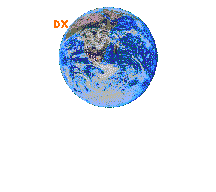
-
 CURRENT SOLAR INDICES
WWV Report FORCAST
CURRENT SOLAR INDICES
WWV Report FORCAST
Earth:
 Sun:
Sun: 
 CURRENT WORLD WIDE PATH OBSERVATIONS
CURRENT WORLD WIDE PATH OBSERVATIONS



|   |
![]() CRITICAL F2 LAYER FREQUENCY MAP (GET CHART ONLY) (N. AMERICA) (EUROPE)
CRITICAL F2 LAYER FREQUENCY MAP (GET CHART ONLY) (N. AMERICA) (EUROPE)
![]() MAX HEIGHT OF F2 LAYER (GET CHART ONLY)
MAX HEIGHT OF F2 LAYER (GET CHART ONLY)
![]() E LAYER FREQUENCY MAP (GET CHART ONLY)
E LAYER FREQUENCY MAP (GET CHART ONLY)
![]() INTRODUCTION TO HF RADIO PROPAGATION (PDF 159K 23 Pgs.)
INTRODUCTION TO HF RADIO PROPAGATION (PDF 159K 23 Pgs.)
![]() RECENT SOLAR ACTIVITY CHART
CYCLE 23 GETS OFF TO A SLOW START!
RECENT SOLAR ACTIVITY CHART
CYCLE 23 GETS OFF TO A SLOW START!
![]() INDEX OF SOLAR SURFACE IMAGES
REAL TIME SOLAR IMAGE
HI-RES VIEW from SPACE
INDEX OF SOLAR SURFACE IMAGES
REAL TIME SOLAR IMAGE
HI-RES VIEW from SPACE
![]() AURORA BOREALIS HOME PAGE or CURRENT AURORA MAP (Northern) (Southern)
AURORA BOREALIS HOME PAGE or CURRENT AURORA MAP (Northern) (Southern)
![]() MOST RECENT FORECAST FROM W1AW or 27 DAY FORCAST (SOLAR INDEX)
MOST RECENT FORECAST FROM W1AW or 27 DAY FORCAST (SOLAR INDEX)
![]() MORE INFO ON SOLAR ACTIVITY from the Australian Space Weather Agency
MORE INFO ON SOLAR ACTIVITY from the Australian Space Weather Agency
